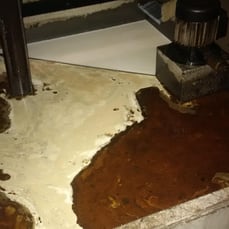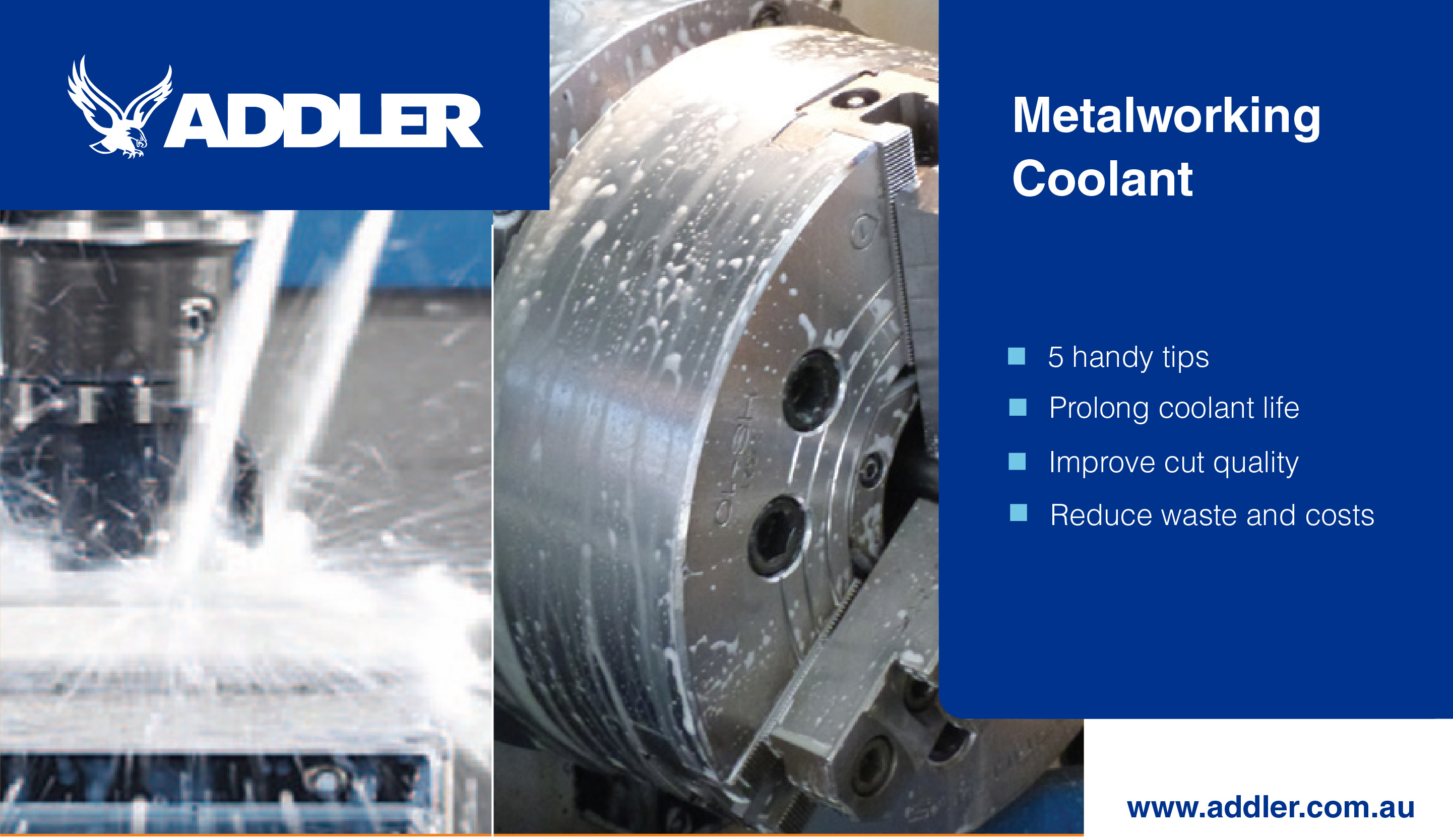When cutting steel, metalworking coolant (also known as Soluble Oil or Cutting Fluid) is essential to producing a high quality finish. The purpose of coolant is to cool, lubricate, and wash swarf away from the cutting tip, along with being a fundamental part in extending blade and machinery life. Problems can occur when the coolant is not maintained properly, causing bacteria growth. This can result in problems such as; foul odour, skin infections and respiratory difficulties. Following are some useful tips that will assist with maintaining and prolonging the life of Coolant;
1. Firstly, start with a clean tank. It is the essential first step to ensuring that bacteria does not develop in your coolant tank. As with any working procedure, cleanliness is critical, a clean tank means clean coolant. Coolant tanks where stagnant solution rests are a breeding ground for bacteria growth, and this is often the source of the problem. Tramp oils, as they are called (hydraulic oils, gearbox oils etc.) find their way into the coolant tank and form a pool on top of the coolant solution. Bacteria growth occurs between the surface of the coolant and the pool of tramp oil, the warmer, more humid conditions often accentuating the problem. Bacteria can be hard to eradicate, as it will flow with the coolant and lodge into small hard to reach areas where the coolant splashes. Often users make the mistake of just simply adding new coolant over the top of the existing bacteria infested coolant. This will infect the new coolant. Eradicating the bacteria isn’t difficult, here’s how to go about it – Plan a time to clean the tank, allowing a day of normal use before the clean to add some system cleaner – a powerful detergent that will kill the bacteria. The quantity of System Cleaner is determined by the volume of Coolant in the tank, add to the ratio of 3%. Following this, a day of normal use will ensure the Coolant solution with the added cleaner will have contacted the infected areas. Now clean the tank, draining and disposing of the old coolant, taking care to remove any build-up of swarf/filings that may have settled on the base of tank. This will allow you to proceed with mixing a new batch of Coolant without the fear of it becoming contaminated and optimal life of the Coolant will be achieved. In the instance of there being no bacteria in your coolant, and you need to top it up, take a sample and mix it with the new solution to ensure that there is no issue with the combination.
2. Maintain a regular check of your tank. It is important that you regularly check the condition of the coolant tank, removing any build-up of solids and swarf. Preventative maintenance and care to keep other oils and solutions from draining into the Coolant tank will maximise coolant life and efficiency, along with saving money.
3. Prevent contamination of coolant. As always prevention is better than cure. Storage and mixing methods can be a common cause of contamination. Leaving storage containers without properly sealed lids, can lead to debris and other liquids entering the container and contaminating it. Further to this, always use a clean washed bucket or drum to mix your coolant. Using containers or drums that have had other solutions in them may cause separation and ineffective emulsification of the coolant and water.
4. Add Coolant to water. It is essential that you add the soluble coolant to the water, some fall into the trap of doing the reverse. This is critical to the guarantee that the Coolant has sufficiently emulsified with the water. When the reverse mixing method has taken place, water is added to the coolant, the result will be a strong, over concentrated mixture that won’t keep emulsifying. There will be a large percentage neat water, which will cause rust spots and seizing of moving components. This can also lead to separation of the coolant and water over time, allowing for easier conditions for bacteria to grow. When correctly mixed, the coolant solution is added to the water, the mix is guaranteed to be consistent, ensuring there is no potential for rust and resulting in the coolant lasting for longer as a stable solution.
5. Adding to the coolant in your tank is another point to bring attention to. Many fall into the habit of ‘topping up’ the tank with more water. This in effect is the same as what is listed above – there is no guarantee that the water will emulsify with the coolant and will be likely to cause rust spots etc. The correct method to ‘top up’ the coolant is to have a quantity of pre-mixed coolant solution ready, in a sealed drum that can be added as required.




One thought on “Five ways to prolong the life of metalworking coolant”